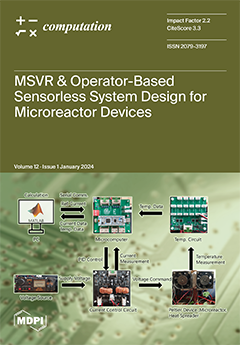Many biotechnology sectors that depend on fluids and their physical characteristics, including the phenomenon of bioconvection, have generated a great deal of discussion. The term “bioconvection” describes the organized movement of microorganisms, such as bacteria or algae. Microorganisms that participate in bioconvection display directed movement, frequently in the form of upward or downward streaming, which can lead to the production of distinctive patterns. The interaction between the microbes’ swimming behavior and the physical forces acting on them, such as buoyancy and fluid flow, is what drives these patterns. This work considers the laminar-mixed convection incompressible flow at the stagnation point with viscous and gyrotactic microorganisms in an unsteady electrically conducting hybrid nanofluid (Fe
3O
4-Cu/water). In addition, hybrid nanofluid flow over a horizontal porous stretched sheet, as well as external and induced magnetic field effects, can be used in biological domains, including drug delivery and microcirculatory system flow dynamics. The governing system has been reduced to a set of ordinary differential equations (ODEs) through the use of the group technique. The current research was inspired by an examination of the impacts of multiple parameters, including Prandtl number,
, magnetic diffusivity,
, shape factor
, microorganism diffusion coefficient,
, Brownian motion coefficient,
, thermophoresis diffusion coefficient,
, bioconvection Peclet number,
, temperature difference,
, and concentration difference,
. The results show that as
rises, temperature, heat flux, and nanoparticles all decrease. In contrast, when the
value increases, the magnetic field and velocity decrease. Heat flow, bacterial density, and temperature decrease as the
value rises, yet the number of nanoparticles increases. As the
value increases, the temperature, heat flow, and concentration of nanoparticles all rise while the density of bacteria decreases. Even though temperature, heat flux, nanoparticles, and bacterial density all decrease as
values climb, bacterial density rises as
values do although bacterial density falls with increasing,
and
values; on the other hand, when n values increase, temperature and heat flow increase but the density of bacteria and nanoparticle decrease. The physical importance and behavior of the present parameters were illustrated graphically.
Full article





